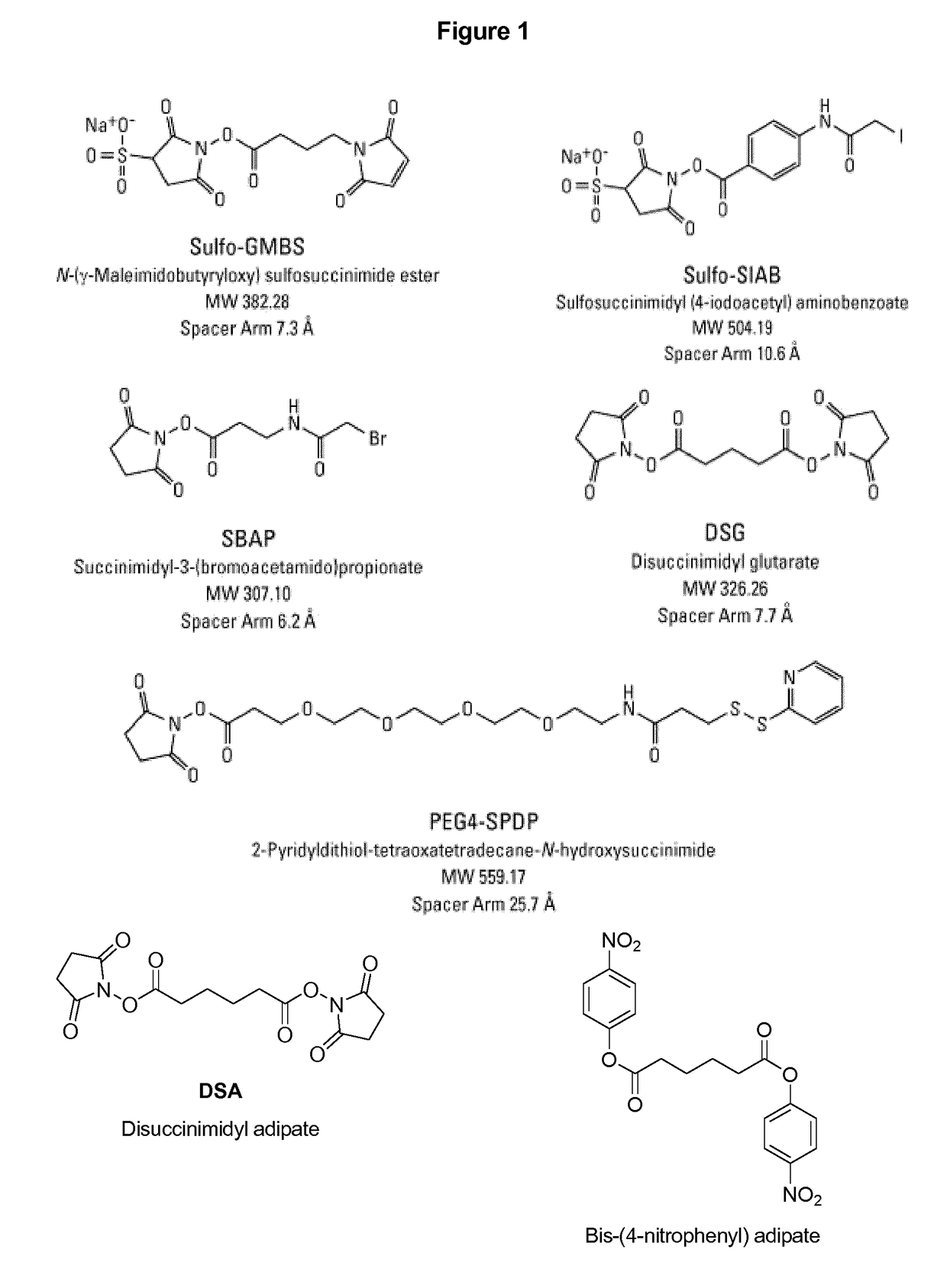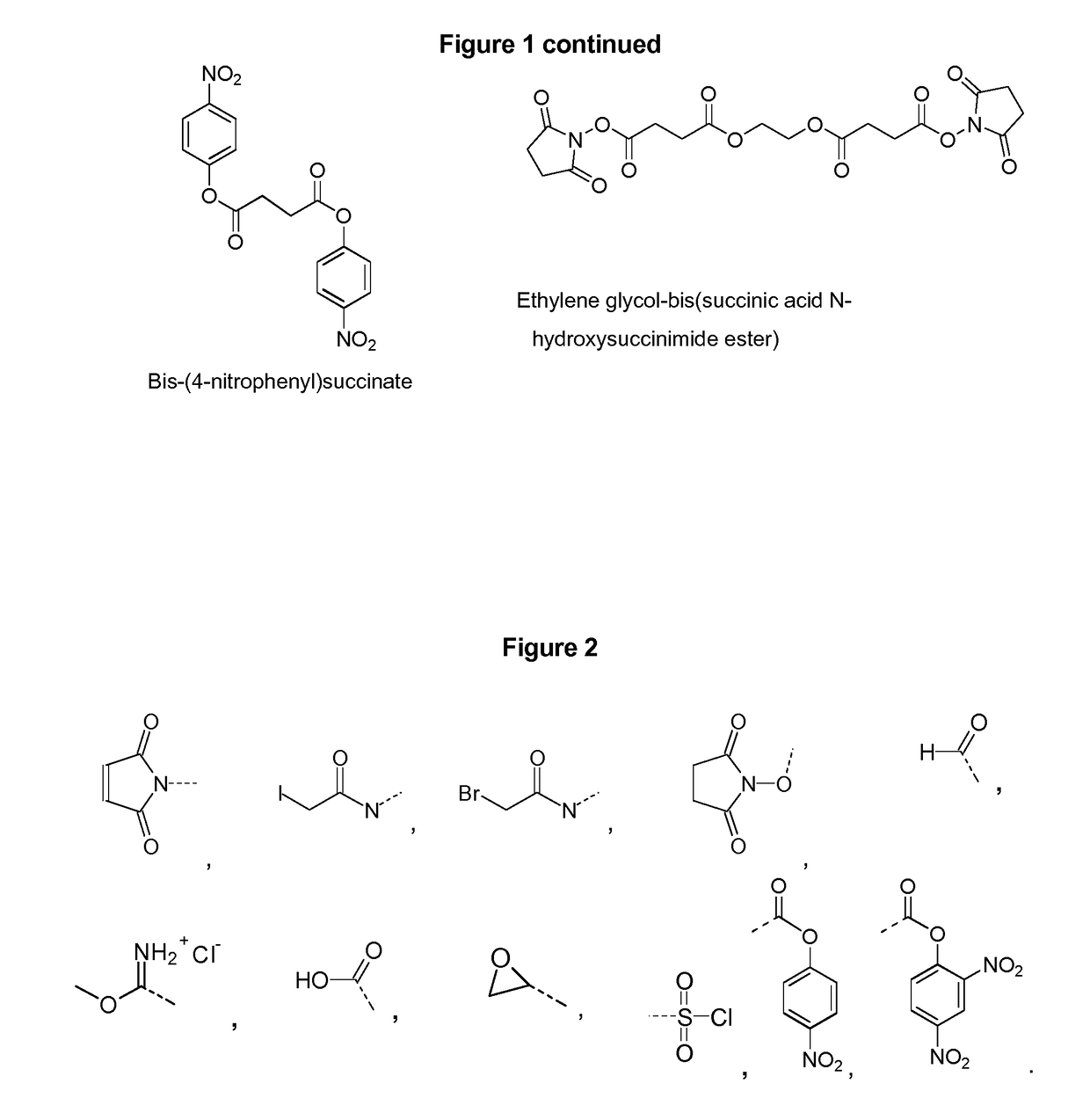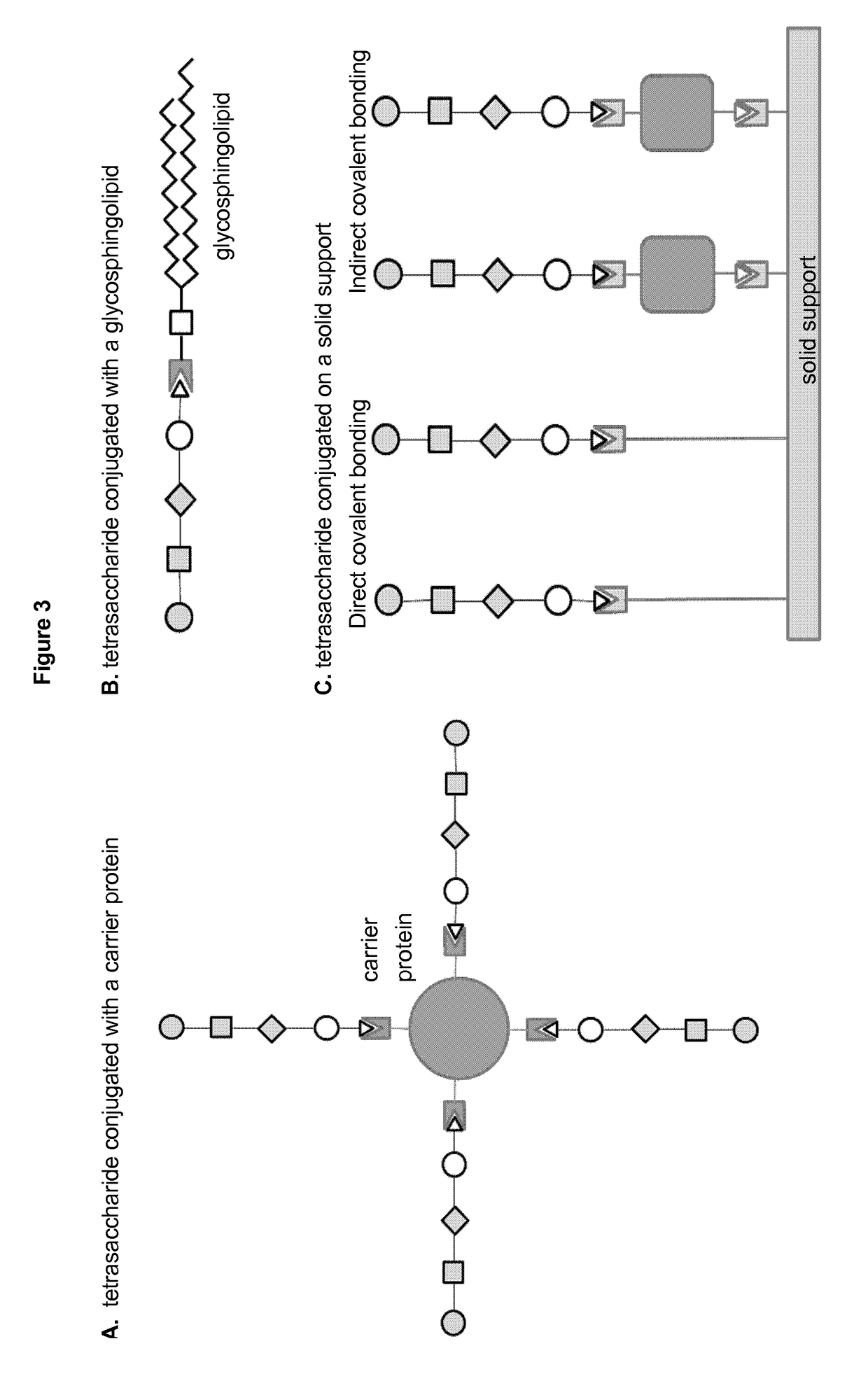Vaccines against Streptococcus pneumoniae serotype 8
a technology of streptococcus pneumoniae and vaccines, applied in the field of synthetic saccharides, can solve the problems of ineffectiveness, high price, and inability to elicit long-lasting protection
- Summary
- Abstract
- Description
- Claims
- Application Information
AI Technical Summary
Benefits of technology
Problems solved by technology
Method used
Image
Examples
example 1-1
Synthesis of Compound 3
[0591]
[0592]Thioglycoside donor substrate 1 (6.0 g, 11.53 mmol) and acceptor with C-2 linker 2 (dried azeotropically using toluene in rotary evaporator, 3.93 g, 13.83 mmol) were taken in dry DCM (100 mL) and added 5 g of MW dried 4 Å MS to it and stirred at rt for 15 min and then cooled to —10° C. NIS (3.83 g, 17.29 mmol) and TfOH (0.15 mL, 1.73 mmol) were then added to RM (reaction mixture) and stirred at −10° C. to −5° C. for 1 hr. Reaction completion was monitored by TLC. RM was then quenched with 10% aq. Na2S2O3 solution (50 mL) and then extracted with EtOAc (25 ml×3). Combined organic layer was then washed with brine (10 ml), dried over anhydrous Na2SO4, filtered and concentrated in vacuum to get pale yellow oily compound. Crude product was purified on silica gel column chromatography using 20-30% EtOAc in hexanes to get spot which on evaporation yielded desired product 3 as pale yellow colored transparent gummy liquid (7.60 g, 89%).
[0593]1H NMR (400 MHz,...
example 1-2
Synthesis of Compound 4
[0594]
[0595]Substrate 3 (7.50 g, 10.08 mmol) was taken in DCM (75 mL) under argon with activated 3 Å MS for 10 min before cooling to 0° C. Added triethylsilane (12.88 mL, 81.0 mmol) followed by TFA (4.66 mL, 60.5 mmol) drop wise and stirred the RM at rt for 16 h before quenching with water (100 mL). Extracted the aqueous with DCM (30 mL×3), combined organics were washed thoroughly with water (20 mL×3), brine (20 mL), dried over anhyd. Na2SO4, filtered, evaporated in vacuum to get colorless gummy solid. Crude product was purified by silica column chromatography using 30%-100% EtOAc in hexanes to get product 4 and evaporated in vacuum to get colorless oil (6.1 g, 81%).
[0596]1H NMR (400 MHz, CDCl3) δ=8.04-7.84 (m, 4H), 7.60-6.87 (m, 21H), 5.55-5.36 (m, 2H), 5.22-4.90 (m, 2H), 4.77-4.53 (m, 3H), 4.51-4.30 (m, 2H), 4.06-3.93 (m, 2H), 3.87-3.53 (m, 4H), 3.46-3.20 (m, 3H). 13C NMR (101 MHz, CDCl3) δ=167.3, 165.5, 138.0, 137.7, 133.6, 130.1, 129.9, 128.6, 128.5, 128.1...
example 1-3
Synthesis of Compound 5
[0597]
[0598]Acceptor 4 (2.0 g, 2.68 mmol) was taken in DCM (30 mL) with activated 4 Å AWMS and stirred at rt for 30 min before cooling to 0° C. TMSOTf (0.49 μL, 0.27 mmol) was then added followed by the imidate donor 6 (Carbohydrate Res 2008, 344, 439-447.) (2.20 g, 3.89 mmol) in DCM (5 mL) over 5 min and the reaction mixture was stirred for 30 min at 0° C. Quenched the RM with Et3N (1mL), filtered and the solvents removed under vacuum. Crude product was purified by flash chromatography using EtOAc in hexanes to get product 5 (3.2 g, 98%).
[0599]1H NMR (400 MHz, CDCl3) δ=8.13-6.88 (m, 35H), 5.67-5.52 (m, 1H), 5.46-5.31 (m, 1H), 5.20 (s, 1H), 5.16-4.89 (m, 3H), 4.68 (t, J=11.2 Hz, 1H), 4.55 (d, J=8.1 Hz, 1.5H), 4.47-4.24 (m, 3.5H), 4.20-3.89 (m, 1.5H), 3.89-3.19 (m, 9.5H), 3.13 (td, J=9.7, 4.9 Hz, 1H), 2.63 (t, J=10.2 Hz, 1H), 0.63 (s, 9H), -0.12 (s, 3H), −0.19 (s, 3H). 13C NMR (101 MHz, CDCl3) δ=165.4, 165.36, 164.7, 138.2, 137.1, 133.4, 133.2, 129.94, 129.9, 1...
PUM
 Login to View More
Login to View More Abstract
Description
Claims
Application Information
 Login to View More
Login to View More - R&D
- Intellectual Property
- Life Sciences
- Materials
- Tech Scout
- Unparalleled Data Quality
- Higher Quality Content
- 60% Fewer Hallucinations
Browse by: Latest US Patents, China's latest patents, Technical Efficacy Thesaurus, Application Domain, Technology Topic, Popular Technical Reports.
© 2025 PatSnap. All rights reserved.Legal|Privacy policy|Modern Slavery Act Transparency Statement|Sitemap|About US| Contact US: help@patsnap.com



